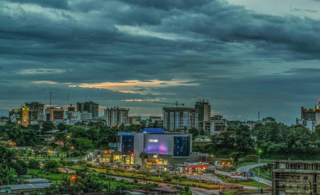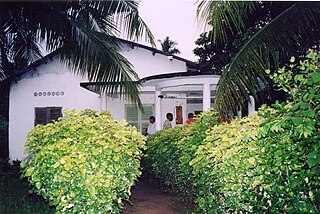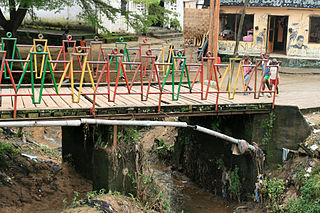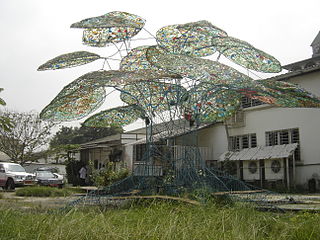| Borne Fontaine | |
|---|---|
 | |
| Artist | Danièle Diwouta-Kotto |
| Year | 2003 |
| Medium | Building |
| Dimensions | 6 m× 3 m× 4 m(240 in× 120 in× 160 in) |
| Location | Vallée Bessengue, Bessengue Akwa Douala, Cameroon |
| 4°03′17″N9°42′26″E / 4.054601°N 9.707102°E Coordinates: 4°03′17″N9°42′26″E / 4.054601°N 9.707102°E | |
| Owner | Municipality of Douala |
Borne Fontaine (or Kiosque à eau) is a permanent fountain, from artist Danièle Diwouta-Kotto, inaugurated in 2003. It is located in Douala (Cameroon).

A fountain is a piece of architecture which pours water into a basin or jets it into the air to supply drinking water and/or for a decorative or dramatic effect.

Danièle Diwouta-Kotto, born in 1960, is a Cameroonian designer and architect, member of the Cameroon architects association (ONAC) and founder of the V.A.A. Villes et Architectures d'Afrique organization.

Douala is the largest city in Cameroon and its economic capital. It is also the capital of Cameroon's Littoral Region. Home to Central Africa's largest port and its major international airport, Douala International Airport (DLA), it is the commercial and economic capital of Cameroon and the entire CEMAC region comprising Gabon, Congo, Chad, Equatorial Guinea, Central African Republic and Cameroon. Consequently, it handles most of the country's major exports, such as oil, cocoa and coffee, timber, metals and fruits. As from 2018, the city and its surrounding area had an estimated population of 1,338,082. The city sits on the estuary of Wouri River and its climate is tropical.





















